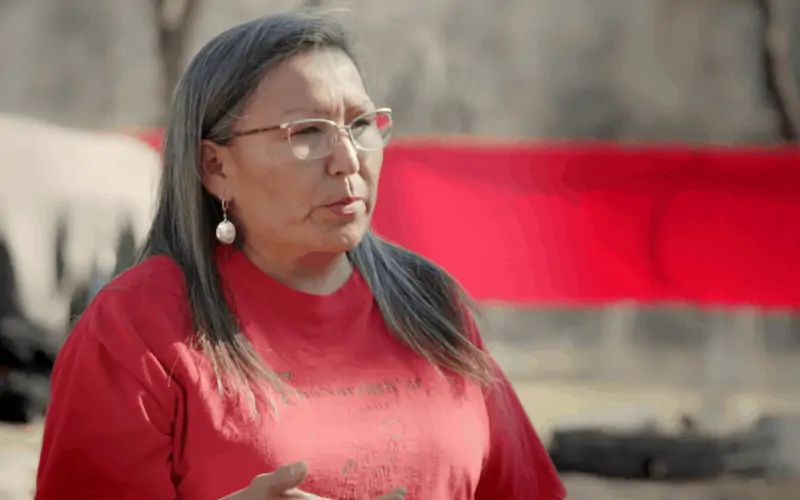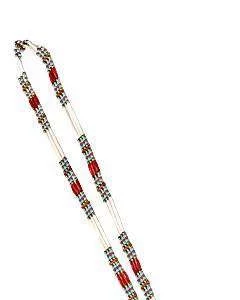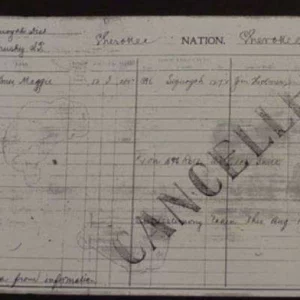The Manito Ahbee Festival—which held its Virtual Pow Wow May 21—recently started a series called Youth Education Land Based and Cultural Teachings. Sponsored by Celebrate 150, the teachings aim to educate the next generation so that they might carry indigenous traditions and cultural practices into the future.
One of the teaching videos, which you’ll find below, focuses on Thanadelthur, a remarkable Chipewyan Indian better known as the “Slave Woman.” Her fame rests on her successful journey against all odds to the Hudson’s Bay Company in 1715–16, according to canadashistory.ca.
Take a look, and read the transcript below.
Lucy Antsenan:
[Native language] My name is Lucy Antsenan, I'm from Lac Brochet, and I'm here to tell you a story. I heard this story from my mother when I was a little girl, and my mom and I went to the store to buy a jacket for me, a winter jacket, and then I chose a red jacket. So she says [Native language]. Just like Thanadelthur, you chose a red jacket. And then she told me a story about Thanadelthur, that's how we say it. It means martin shake, because she's feisty. A martin is a small animal, and when it's angered, it's very feisty. So she has that characteristic, she's very bold, and even though she's small, she's very feisty.
So anyways, Thanadelthur came into this story in Canada over 300 years ago, she lived over 300 years ago, and she was enslaved. She was enslaved by the Cree at that time. The Cree was closer to the Hudson Bay in York Factory. And so when I heard this story as a little girl, it's an oral story, but when I was in university, we were learning about First Nations, Native studies. And then there was a presentation I was supposed to do about someone that lived before Confederation, when they signed the Confederation, 1867. So we're all looking for our heroes, like our Tecumseh, Joseph Brant, Big Bear, and the list goes on. I still didn't know who I was going to write about, and then there was a part in the book only about this big, a paragraph. Then I read it and, “Thanadelthur,” and I kept reading, and as I was reading, I was like, ding, ding, ding, in my head. And I said, “Hey, wait a minute. This sounds familiar.”
So since '94 to this day, I keep telling her story. I want our people to know about it, because you need to know your past, you need to know your history to be a strong nation, to be a strong woman. You need that. So I keep telling a story, and as an educator, I do that to my students. And then I introduced the Red Day because February 5, 1717, is the day she died. That's a known date we have, it's documented in the Hudson Bay Company journals. It's the big book like this. She was kidnapped. She was missing. Her whole family was slaughtered. And just the two of them survived. She was 15, 16 years old.
But the reason why she was the only one that survived, and the other girl, is because she was very beautiful. So she was amongst the Cree, enslaved, and she learned to speak Cree. So now she's got Dene, and she's got Cree. And then they escaped one year, in about November. They escaped in November, and they were going back north. This is before the borders became borders. This is before Manitoba, before even Canada became Canada. This is 306 years ago, 307 years ago. Anyways, they escaped back north to their people. One of them died, so she knew she couldn't survive by herself because it's during the little ice age. So she turned back and then she stumbled amongst goose hunters. You hear the goose? That's why, because she's amongst us, goose hunting.
They took her back to the Hudson Bay Company, it's a little fort that was in York Factory. And then the governor at that time, James Knight thought, hmm… He's old man, white guy, “We need her. She speaks Cree, she speaks Dene. We need her because we can have trade with the Dene people.” The Hudson Bay Company, James Knight, the governor, hired her, basically, to be an interpreter, to be a guide, to make peace with the Cree and the Dene. So she said, “I have to go back up there, we have to bring gifts to them. I have to talk to my people to make that peace.” They walked from York Factory, Manitoba… No Manitoba yet, but York Factory. They walk all the way to close to Baker Lake, and that's where her people were. But before they got to her people, there were an encampment there of Dene people, slaughtered, again, by the Cree.
So the Cree that were coming with them, there was about 115 men and women that came with them. They said, “Oh, we can't go any further because we could get killed too.” So they made a fort, she said, “You stay here. I'll come back for you. 10 days. I'll be gone 10 days.” This is in around February, March during a little ice age. Can you imagine a 16 year old walking, by herself, in the cold, up north? She trekked on into the dark. She went to look for her people. How did she know? How did she know she was going to be back on the 10th day? She's a visionary. She's a mathematician. She's an astrologist. She was following the stars to get to her people.
On the 10th day, lo and behold, she came back. She lost her voice. In there in the journals, it says she lost her voice because of negotiating peace between the Dene and the Cree. Because these are ancient rivalries, they're always killing each other, back and forth. But she said, “We have to make peace. Yes, we lived like this for a long time, but now we have to make peace.
So February 5 is the day she died. So upon learning about her from my parents, upon learning from her in the books, and then becoming a teacher later on, I, in turn, tell her story to the students. And then I started the movement of wearing red on February 5. But she is very important to us. She's a very strong woman, a teenager, and she has survived the elements. And she was thinking for our future, as a woman, not only just the Dene girls, not just the Dene people, but as a nation of indigenous people.





Janet Childress
says:I very much liked reading the article. Thank you for sharing it.